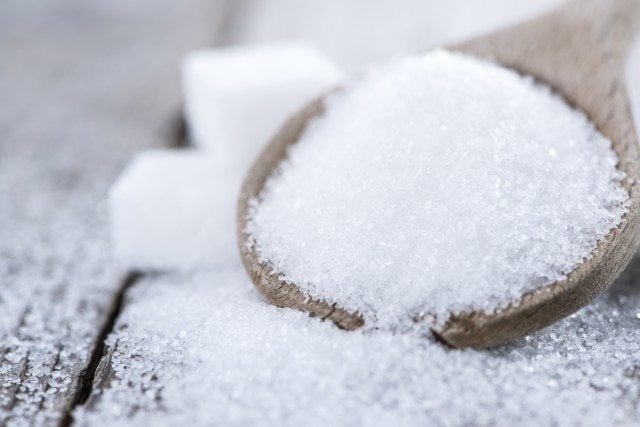The Scientific Advisory Committee on Nutrition (SACN) in the UK has on June 26, 2014 published its draft report on carbohydrates and health, which Ian Johnson, from the Institute of Food Research (IFR), is a member of the report’s working group.
In addition, Public Health England (PHE) has published a response, Sugar Reduction: Responding to the Challenge.
The IFR finds the report to provide a thorough, systematic review of the current state of knowledge in relation to the biological effects of different carbohydrates on health.
It states the report provides objective and independent evidence on which people can base decisions on how they can tackle the problems of obesity and other diet-related conditions.
Recommended sugar intake for men, women
The draft SACN report recommends free sugars (those added to food or in fruit juices) should be less than 5% of daily dietary energy intake.
Based on the average diets, this means 25 g of free sugars for women (five to six teaspoons) and 35 g (seven to eight teaspoons) for men.
It recommends reducing the consumption of free sugar in the diet to 5% of dietary energy, and an increase in the amount of fiber in the diet.
This will help to maintain good health, reduce high levels of obesity, and lower the risks of type II diabetes and cardiovascular disease.
IFR says consumers in the UK are failing to meet the present guidelines, which is a measure of the challenge they face.
It finds the food industry should continue its efforts to minimize the levels of sugars and fats in manufactured foods.
Scientific research can help accelerate this, especially where genuine barriers to sugar and fat reduction exist, such as detrimental effects on shelf-life, or where the overall structure or taste of the final product becomes unacceptable to the consumer.
It finds the development of healthier products needs to be done in conjunction with efforts to educate consumers on broader aspects of a balanced diet, and to address other lifestyle factors, such as exercise.
Manufacturers should produce more attractive alternatives to sugary drinks
The report recommends that sugar-sweetened drinks should be consumed in minimal amounts.
The recently published National Diet and Nutrition Survey highlighted these, with 11-18 year olds obtaining 30% of their recommended daily sugar intake from soft drinks.
Behavioral change from consumers could most effectively reduce this, replacing sugary drinks with water or other low-calorie alternatives, but there is a role for the manufacturers to play in making better, more attractive alternatives.
The evidence presented in the report linking excess sugar to adverse effects on health should also spur the food industry to redouble its efforts to reduce added sugar in its products.
However, IFR says it must be recognized that there are genuine barriers to doing this quickly.
Removing sugar from foods with science, technology
Removal of sugar should be approached with caution and with exact knowledge of the preservative role sugar plays.
In some products sugar acts as an important preservative.
Sugar ties up the amount of water available within the product in which bacteria can grow.
If the water available is increased by removing some of the sugar it is possible organisms may be able to start growing in the product, where previously growth was prevented.
This can reduce shelf-life, increase wastage and potentially increase the risks of food poisoning.
But IFR says these problems can and should be surmountable.
For example, product reformulation and its effect on safety and product stability can be predicted using various software tools widely available including the Combined Database for Predictive Microbiology, ComBase.
In addition ComBase@IFR also contains various predictive models that can aid product reformulation by predicting the effect of changes on the ability of organisms to grow within certain environmental conditions.
However all predictions must be validated by practical microbiological testing.
Sugar and starch are sometimes used to improve the taste and texture of low fat foods.
Whilst this may reduce the overall calorie content, it could also contribute to free sugar in the diet, in products that consumers could perceive as being ‘healthier’.
IFR says the industry needs to understand how all of these factors contribute to the overall properties of foods to formulate genuinely healthier foods, low in both sugar and fat, and science and technology have major roles to play in that.











